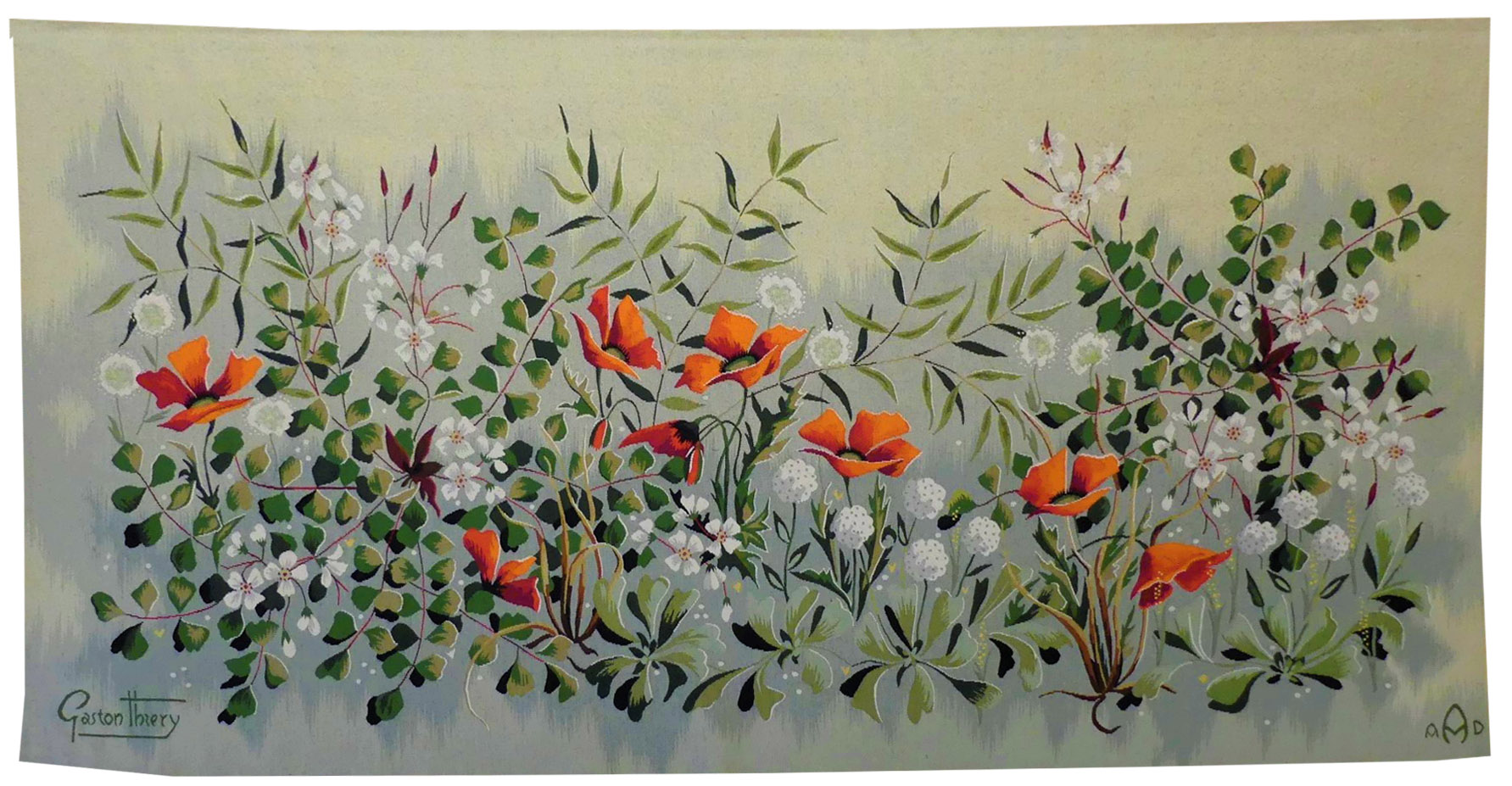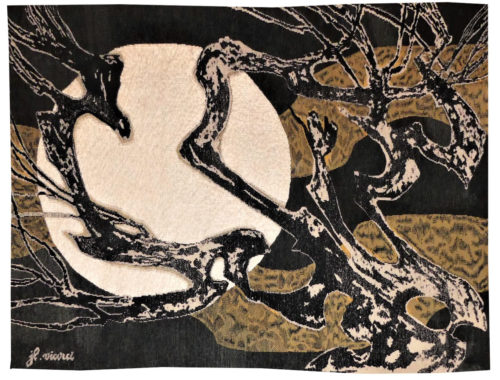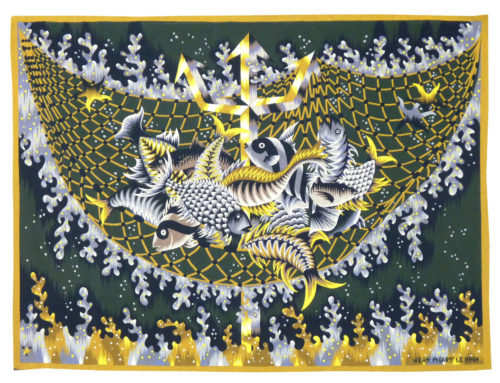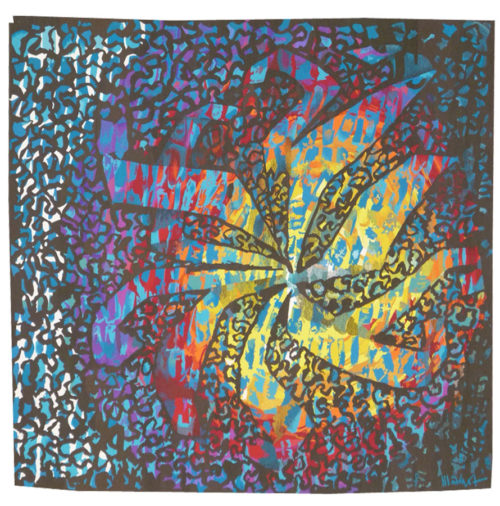Le Chalut (the trawler)
Aubusson tapestry woven by the Berthaut workshop.
Complete with certificate of origin signed by the artist.
1952.
Jean Picart le Doux is one of the foremost figures in the renaissance of the art of tapestry. His earliest contributions to the field date back to 1943 when he designed cartoons for the passenger ship “la Marseillaise”. A close associate of Lurçat, whose theories he would adopt (limited palette, numbered cartoons...), he was a founding member of the A.P.C.T. (Association des Peintres-cartonniers de Tapisserie), and soon after, a teacher at the Ecole Nationale Supérieure des Arts Décoratifs. The state gave him several commissions most of them at the Aubusson workshop, and some at the Gobelins : the most spectacular of these being for the University of Caen, the Theatre in Le Mans, the passenger ship France or the Prefecture of the Creuse département ... In as much as Picart le Doux’s aesthetic is close to that of Lurçat, so also is his insipiration and his subject matter, although in a register which is more decorative than symbolic, where he brings together heavenly bodies (the sun, the moon, the stars...), the elements, nature (wheat, vines, fish, birds...), man, literary quotation ...
« One of the best-known of Picart le Doux’s tapestries : it is highly organised and the generous curves of the trawl net underline the choice of a large and simple graphic.” Is how Maurice Bruzeau describes this tapestry (n° 37 in his book) in the commentary he devotes to it. “The trawler” is typical of the marine themes which are omnipresent in this artist’s work, particularly at this period : “Dieu Marin (marine god), “La Sirène” (the mermaid), “le Dauphin” (the dolphin), “Fruits de mer” (shellfish), “Etoiles de mer” (starfish), in a range of muted colours revolving around kaki and silver grey. Here the treatment of the theme is more documentary (apart from the presence of a trident) : the subject is fishing, as it appears to Picart le Doux.
Bibliography :
Léon Moussinac, Jean Picart le Doux, Editions Cercle d’art,1964 (ill. Pl.10)
Marthe Belle-Jouffray, Jean Picart le Doux, Publications filmées d’art et d’histoire, 1966, ill. n°4
Exhibition catalogue, Hommage à Jean Picart le Doux, Centre artistique et littéraire de Rochechouart, 1968 (ill.)
Maurice Bruzeau, Jean Picart le Doux, Murs du soleil, Editions Cercle d’art 1972
Exhibition catalogue Jean Picart le Doux, Paris, Musée de la Poste, 1980 (ill.)
Exhibition Catalogue Picart le Doux, château d'Olonne, 1992 (ill.)





